Frieze Los Angeles – María Berrío
Booth C6
17–20 February 2022
Victoria Miro is delighted to participate in Frieze Los Angeles (booth C6) with Children’s Crusade, a solo presentation of new works by the acclaimed Brooklyn-based artist María Berrío.
Created especially for this presentation, the works on view mark the beginning of a larger series of paintings which blend the history of the thirteenth-century Children’s Crusade with the current mass migrations of peoples across the Mediterranean and the US border.
Speaking about this new series, the artist says: ‘The main focus and the main characters are children and their perceptions as seen through fantasy and magical realism. As the children embark on this arduous journey, they infuse the ordinary with the mythic, as their innocent and imagined interpretation of the world bumps against stark realities. The darker and more bleak aspects of these travels are depicted through the naivete, humanity, love, and wonder of a child’s eyes.’
The Wayfarer
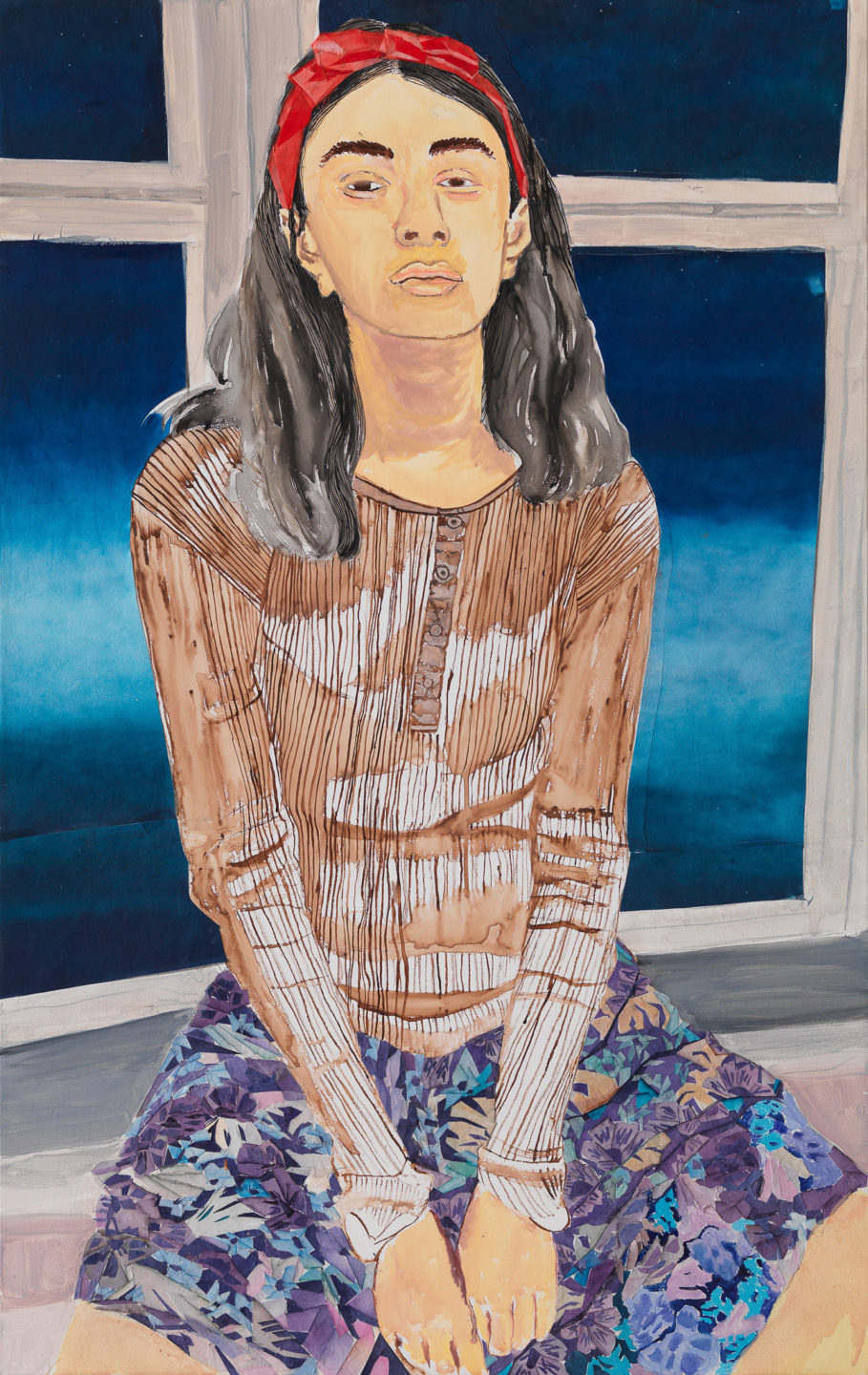
Collage with Japanese paper and watercolour paint on canvas
96.5 x 61 cm
38 x 24 in
María Berrío, The Wayfarer, 2022
More info‘This is a portrait of an imagined traveller, pausing for a brief rest on a long journey.’ — María Berrío
Cavalry
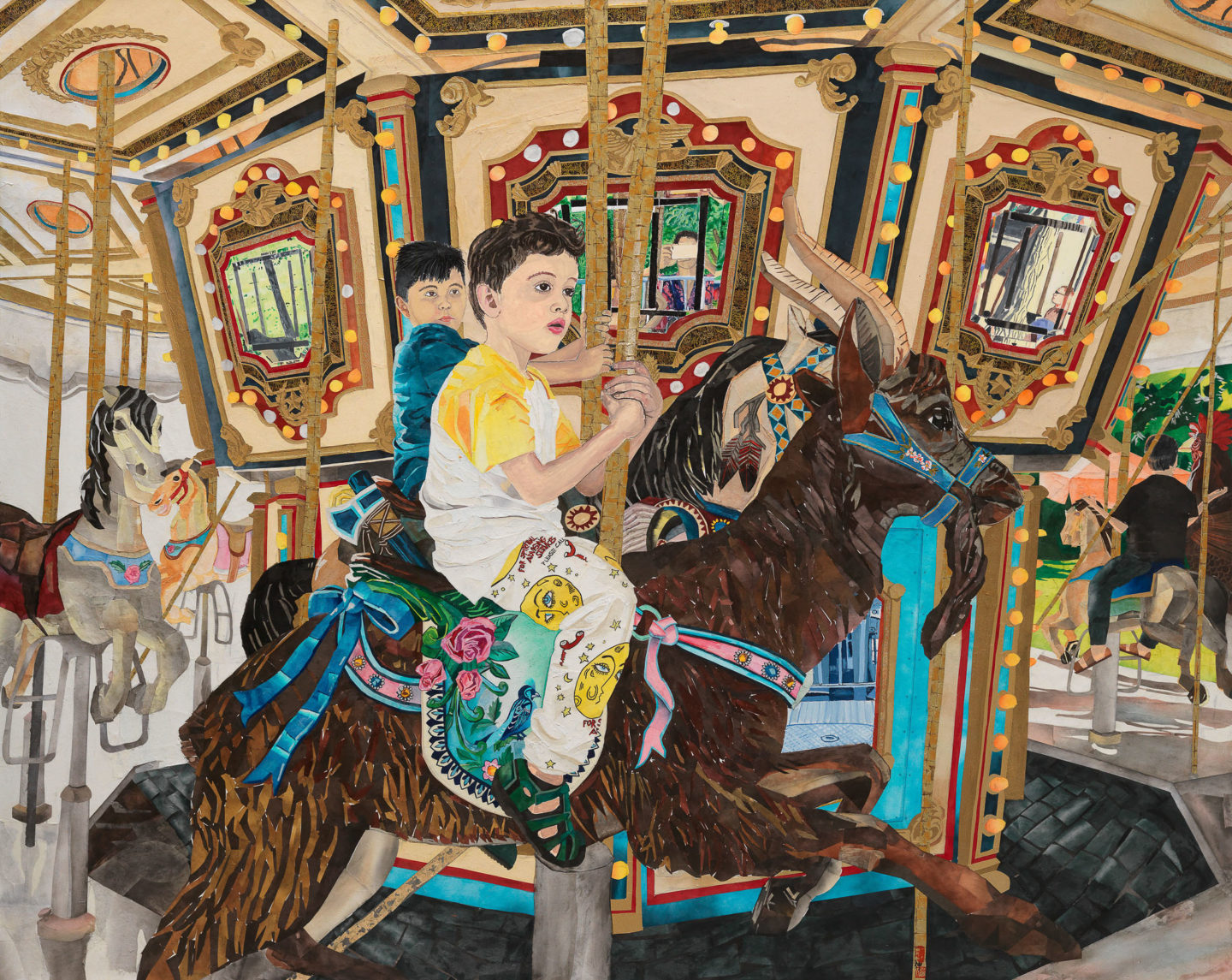
Collage with Japanese paper and watercolour paint on canvas
182.9 x 228.6 cm
72 x 90 in
María Berrío, Cavalry, 2022
More info‘The carousel is the most poignant symbol to the absence of place, a machine that moves in circles with no real or familiar ground or destination.’ — María Berrío
‘The horsemen of the children’s crusade are depicted in Cavalry. The flash of sabre may be the dull sheen of painted fibreglass, but the children lead the charge into battle. The charge, however, will not come to much, as it simply loops in its own pointless orbit, as warfare tends to do. The nobility and glory of battle has been downgraded to chipped plastic banalities and mirrored geegaws. These child soldiers striving for a linear tale of conquest find themselves instead circling back to the beginning, a dull repetition.
The journey of some of the children during migration sometimes is endless, even if they arrive safely at their destination. The carousel is the most poignant symbol to the absence of place, a machine that moves in circles with no real or familiar ground or destination. As immigrants, that absence of place is always present. Unable to return, real places become imaginary. Actual origins become legends. As an artist, I try to revisit and re-imagine it with my work.’
物の哀れ (Mono no aware)

Collage with Japanese paper and watercolour paint on canvas
148.3 x 101.6 cm
58 3/8 x 40 in
María Berrío, 物の哀れ (Mono no aware), 2022
More info‘The Japanese term ‘mono no aware’ speaks of the sweet sadness that comes with the transience of things.’ — María Berrío
‘Childhood is brief, and therein lies much of its beauty. The Japanese term ‘mono no aware’ speaks of the sweet sadness that comes with the transience of things, the very impermanence which heightens our appreciation of them. Raising a child is a joy, but it is a joy with an undercurrent of sorrow, a joy tinged with the melancholic awareness of its brevity. In this work, the mother figure clings to her child, her arms enfolded around it as if it were possible to trap the moment, to cage in its preciousness. The child sleeps the deep slumber of the innocent. It is, however, a diminishing purity, as evinced by the camouflage pants he wears: soon enough this little boy will be in the realm of men and soldiers. But for now, for this moment of rapture and heartache, the mother holds as tightly as she can.’
Ozymandias
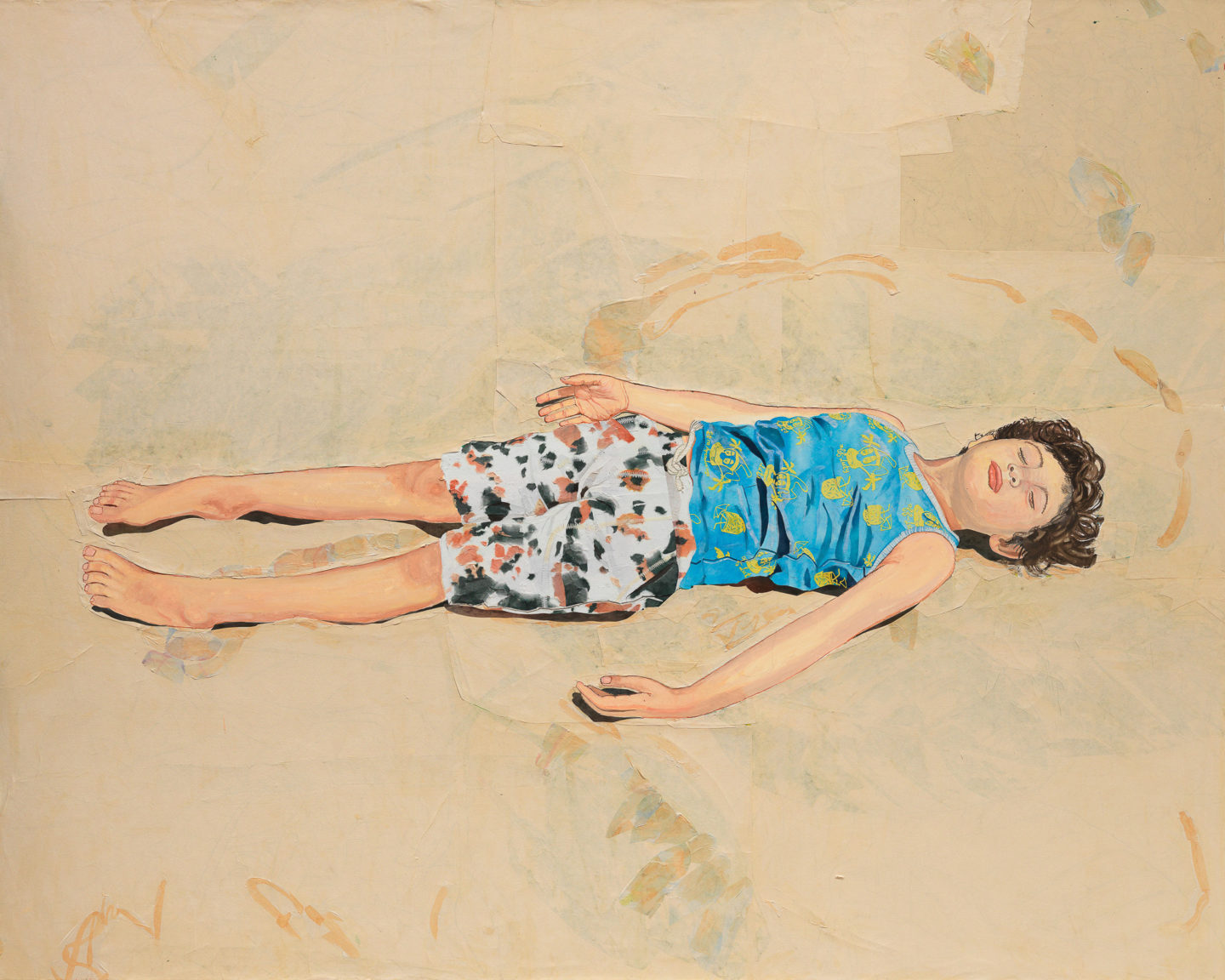
Collage with Japanese paper and watercolour paint on canvas
182.9 x 228.6 cm
72 x 90 in
María Berrío, Ozymandias, 2022
More info‘Perhaps this is the Ozymandias from Shelley’s poem in his youth, Ozymandias in paradise.’ — María Berrío
‘Among the fallen in the Children’s Crusade is Ozymandias. A rather relaxed, statuesque and idyllic casualty, he lays upon his back, eyes closed, tracing an arc through sand while building castles in his mind.
Perhaps this is the Ozymandias from Shelley’s poem in his youth, Ozymandias in paradise. This is the boyhood of a powerful ruler who will grow to be convinced that the enormous reach of his power will make an eternal stamp on history. His childish self-deceptions and dreams of immortality are, of course, no match for time. He constructs his great works inside his head while laying peacefully upon the sands that will one day support his creations, and one day reclaim them. Or perhaps these are the confused, final dreams of a child trying to cross the Sonoran desert.’
Under Thatch and Autumn Star
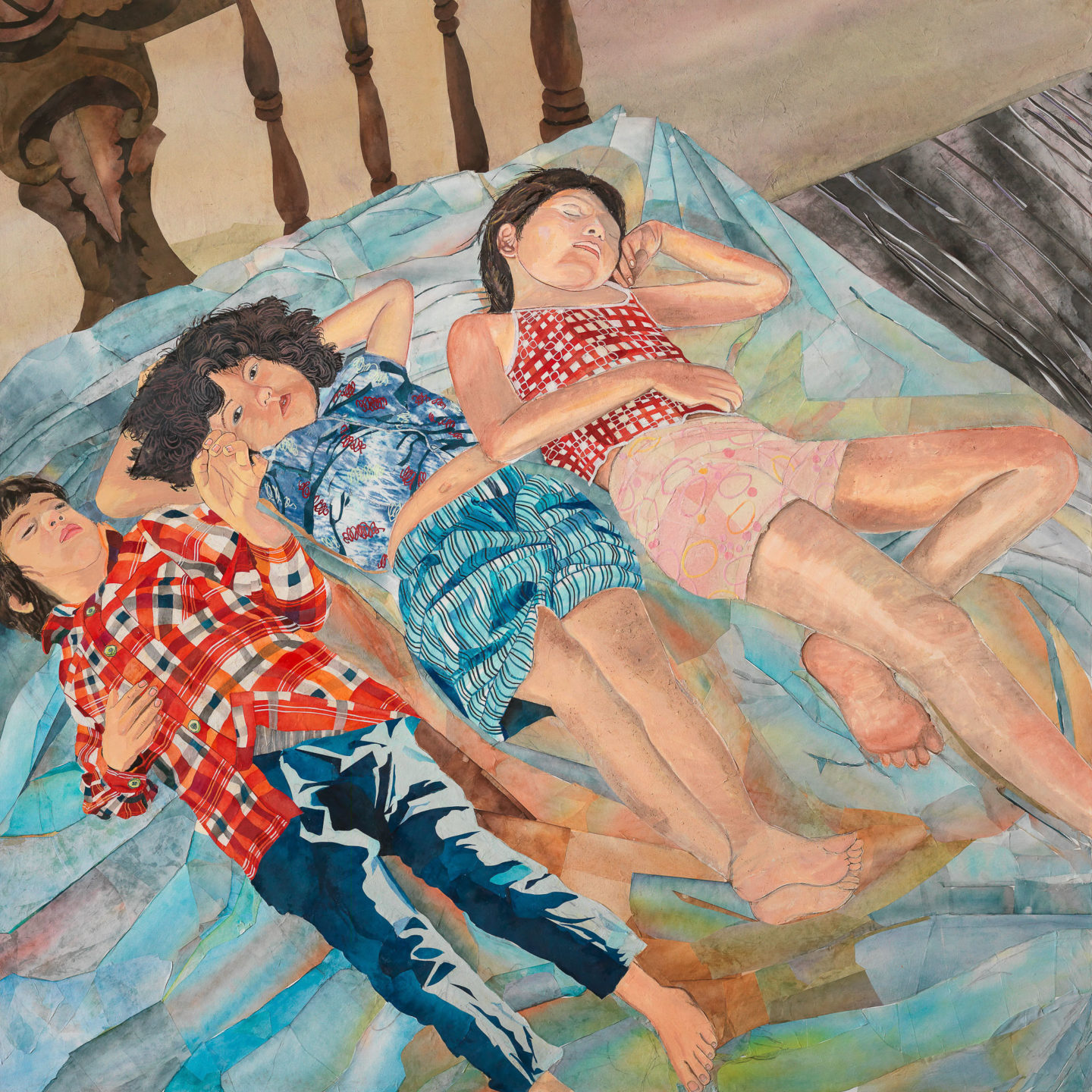
Collage with Japanese paper and watercolour paint on canvas
203.2 x 203.2 cm
80 x 80 in
María Berrío, Under Thatch and Autumn Star, 2022
More info‘The story of the Pied Piper of Hamelin fits nicely with my tale of the Children’s Crusade, itself part exploration of human migration under duress.’ — María Berrío
‘In the story of the Pied Piper of Hamelin, a rat catcher is hired by the town of Hamelin to drive out the rats using his magic flute. When the townsfolk afterwards refuse to pay this pied piper for his service, he exacts revenge by luring away all the children of the town, never to be seen again. In some versions of the story, it is all of the children except for three. This work depicts those three children who are left behind, and the troubled sleep that forever would haunt them. They would grow under the anguish and jealousy of a grief-stricken town, saddled with the guilt of survival, saddled with their own jealousies that perhaps all the other children went off to great things from which they were excluded.
The story fits nicely with my tale of the Children’s Crusade, itself part exploration of human migration under duress. Surely some of those who couldn’t leave on the journey were saddled with envy, and when they slept they dreamt of the adventures and wonders to which the other children were entitled to, and to which they were denied. No matter how grim a reality may have awaited the crusaders, no matter how bleak a fate, to the children left behind it was the exciting march of glory and awe.’
City of Walls, Empire of Glass
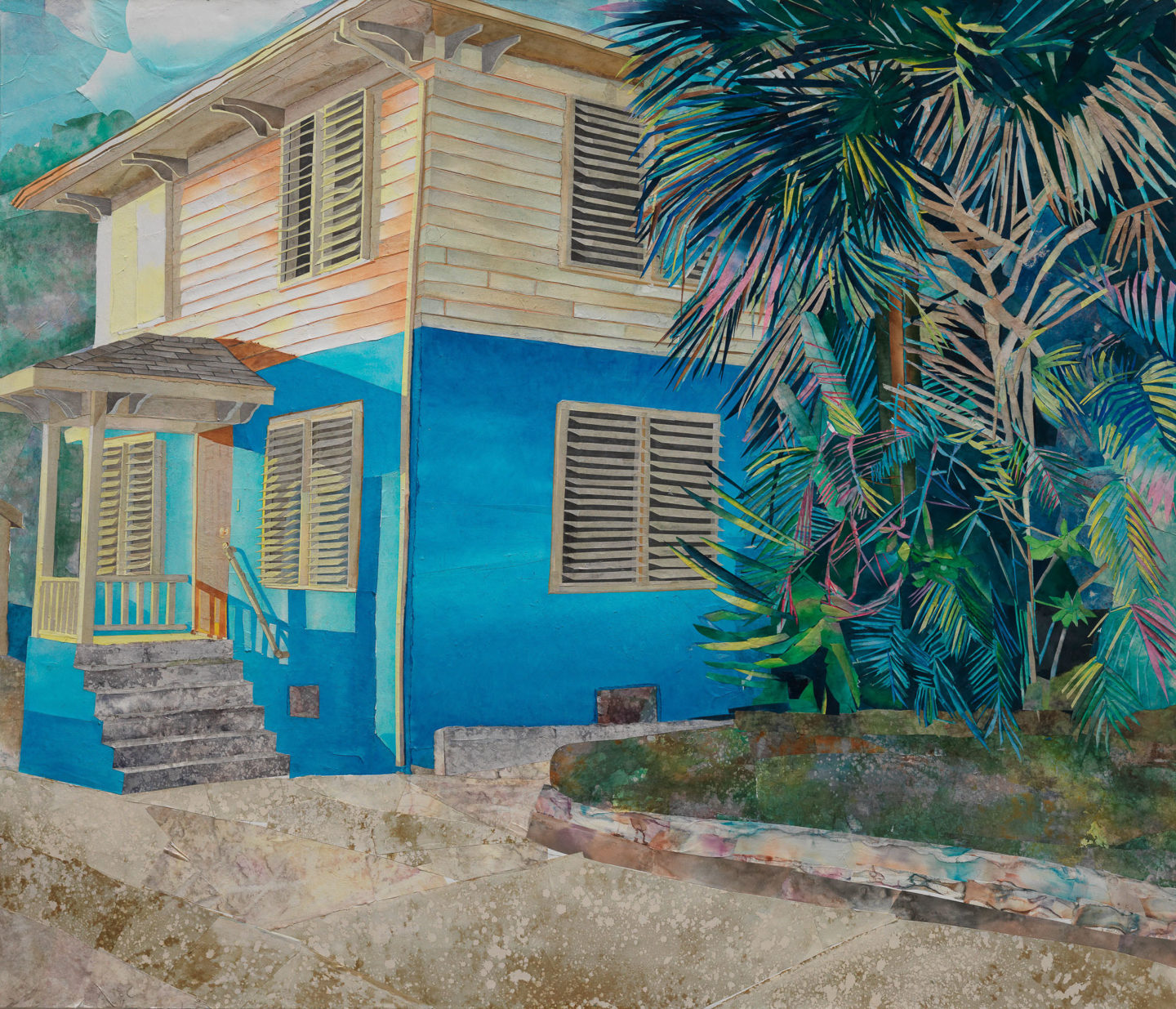
Collage with Japanese paper and watercolour paint on canvas
182.9 x 213.4 cm
72 x 84 in
María Berrío, City of Walls, Empire of Glass I, 2022
More info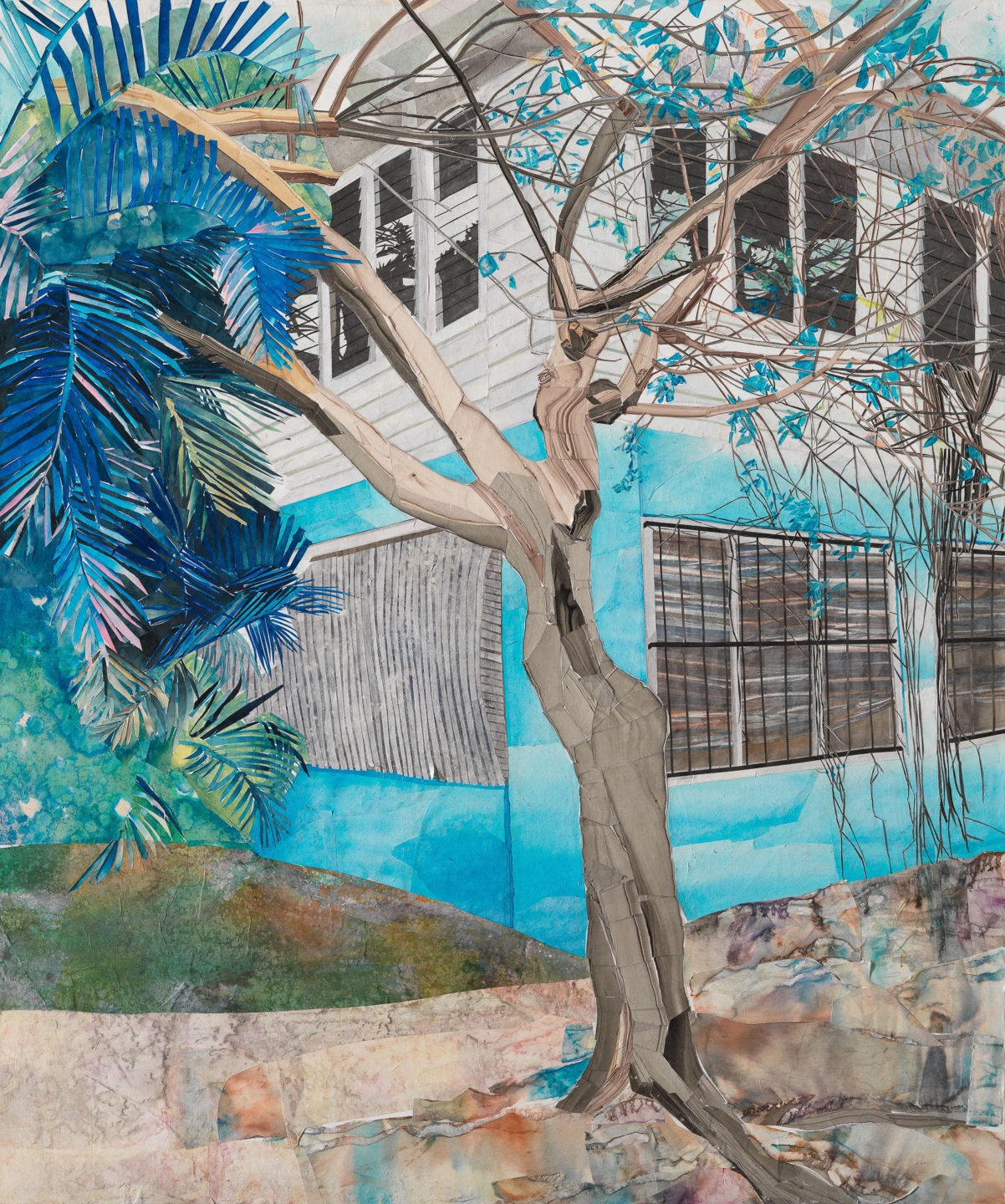
Collage with Japanese paper and watercolour paint on canvas
182.9 x 152.4 cm
72 x 60 in
María Berrío, City of Walls, Empire of Glass II, 2022
More info‘Nature here is a messy vibrancy, at odds with the straight lines of human construction.’ — María Berrío
‘These works are both reflections on children’s memories and imagined futures. They depict an abandoned half-blue house whose stateliness and symmetries are threatened by a torrent of colourful leaves and plants. Nature here is a messy vibrancy, at odds with the straight lines of human construction. But such are memories themselves, things often built and pieced together out of a whirl of fading perceptions and half-remembrances. Upon further examination, our childhood memories rarely resemble the realities lived. A child would create a nearly magical kingdom of memory or expectations, a fragile empire ready to burst to pieces if cast against reality.’
The Vacant Room
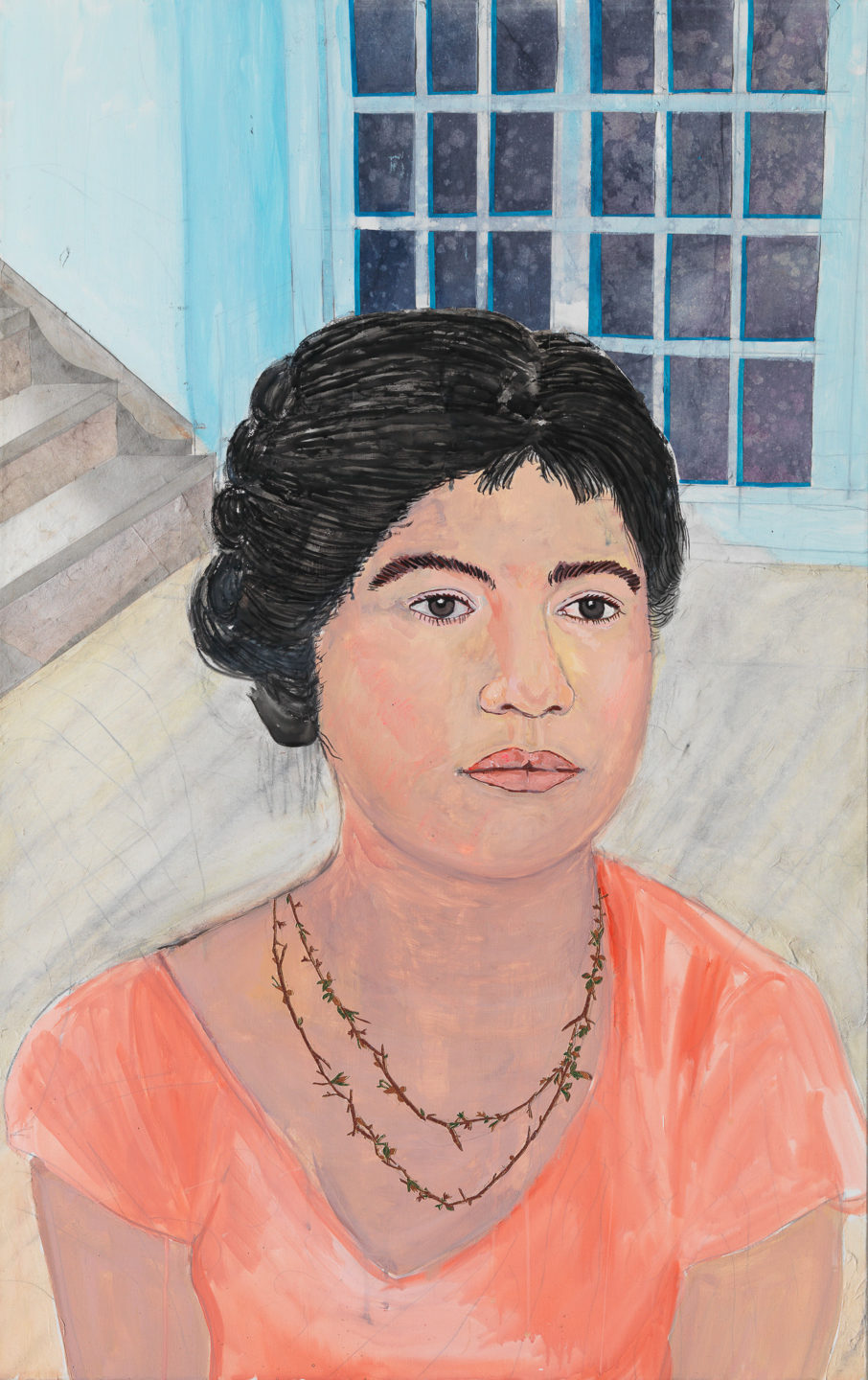
Collage with Japanese paper and watercolour paint on canvas
96.5 x 61 cm
38 x 24 in
María Berrío, The Vacant Room, 2022
More info‘A woman stands in an enclosed emptiness, her footsteps echoing loudly off of the bare floors and walls.’ — María Berrío
About the artist

Based in Brooklyn, María Berrío grew up in Colombia. Her work has been shown as part of significant exhibitions at The Bronx Museum of the Arts, New York; Philadelphia Museum of Art, USA; Nasher Museum of Art, USA; Prospect.4 Triennial, New Orleans; and the Museo del Barrio, New York. The artist’s first survey show María Berrío: Esperando mientras la noche florece (Waiting for the Night to Bloom) was on view at The Norton Museum of Art in West Palm Beach from January until May 2021. Her work will feature in Women Painting Women, a thematic exhibition featuring 46 female artists who choose women as subject matter in their works, on view at The Modern, Fort Worth, 15 May–25 September 2022. Also in the spring, The Institute of Contemporary Art, Miami will display recent acquisitions for the first time, including Berrío’s 2020 sculpture The Petition. Additionally, the artist’s work will be included in a major group exhibition opening in September at The DePaul Art Museum in Chicago, titled A Natural Turn.
Berrío’s work is in permanent collections including the Whitney Museum of American Art, New York, USA; National Gallery of Art, Washington DC; Crystal Bridges Museum of American Art, USA; Nasher Museum of Art at Duke University, USA; Pérez Art Museum, Miami, USA and Pennsylvania Academy of the Fine Arts, Philadelphia, USA, among others.